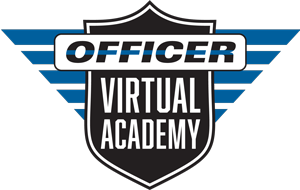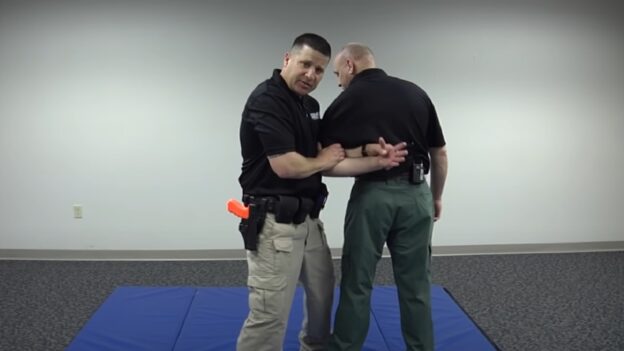This is an online only (virtual) training course that discusses the concerns and proper protocols for searching a subject or a building (briefly). The “1+” rule is discussed and proper positive control holds demonstrated prior to searching a subject. Instructors Borelli and Nance discuss considerations for securing weapons if found during the search of a subject, whether they are handcuffed or not, and options for reacting accordingly.
The course includes a PowerPoint slide show that corresponds to the three training videos. The total viewing time for the videos is approximately 20 minutes broken down into three segments. For viewer’s reference there is also a downloadable PDF version of the PowerPoint presentation, perfect for use in taking notes. A course syllabus and extra reading resources are also included in the training materials.
If there are any questions with regard to the content, please contact the instructor: Lt. Frank Borelli via email to frank@officer.com.
Course Location
This is a virtual course, offered online only and available to registered users of the Officer Virtual Academy at all times.
Course Description
In this course, Instructors Borelli and Nance discuss the plethora of concerns regarding searching a subject whether they are handcuffed or not, and (briefly) the necessary outlook when searching a person, vehicle and building. The “1+” rule is discussed and defined. Two control holds are discussed and demonstrated – the Rear Wrist Lock and the Twist Lock. Methods of securing weapons found during searches are also discussed with pros and cons for each option delineated.
Prerequisites
There are no prerequisites for attending this program.
Course Sequencing
This course is a personal-knowledge-only (no continuing education or in-service credits) program. Prior to viewing this program it’s recommended that the student officer view/attend the following courses:
- Boyd’s Cycle Applied to Conflict Survival
- General Defensive Tactics Introduction
- Lethal Force Attack Defense
Course Objectives
- Upon completion, the student officer will be able to identify the strengths / weaknesses of the Rear Wrist Lock versus the Twist Lock
- Upon completion, the student officer will be able to articulate the potential risks and dangers of searching an unsecured (not handcuffed) subject
- Upon completion, the student officer will be able to articulate what the “1+” rule is and how it applies to searching people, vehicles or structures
- Upon completion, the student officer will be able to articulate the imperativeness of expectation when performing a search
- Upon completion, the student officer will be able to discuss the variety of methods for securing weapons found during the search of a subject
About the Instructors

Lt. Frank Borelli – LE Instructor / Editorial Director
With over 35 years of operational experience and more than 30 years of instructional experience, Lt. Borelli has taught programs involving firearms, defensive tactics, officer survival, active shooter response and more to officers from all levels of government to include city, county, state, federal and military. He remains active in law enforcement, continually training and being trained to keep his skills up to date and sharp.

Sgt. Richard Nance – LE Instructor / SWAT experience / TV personality
Richard Nance is a veteran police officer and former SWAT team leader. He is the co-owner of WARTAC, a company that provides training in firearms, tactics, and personal defense. Nance cohosts Handguns & Defensive Weapons, a new television series on the Sportsman Channel.


